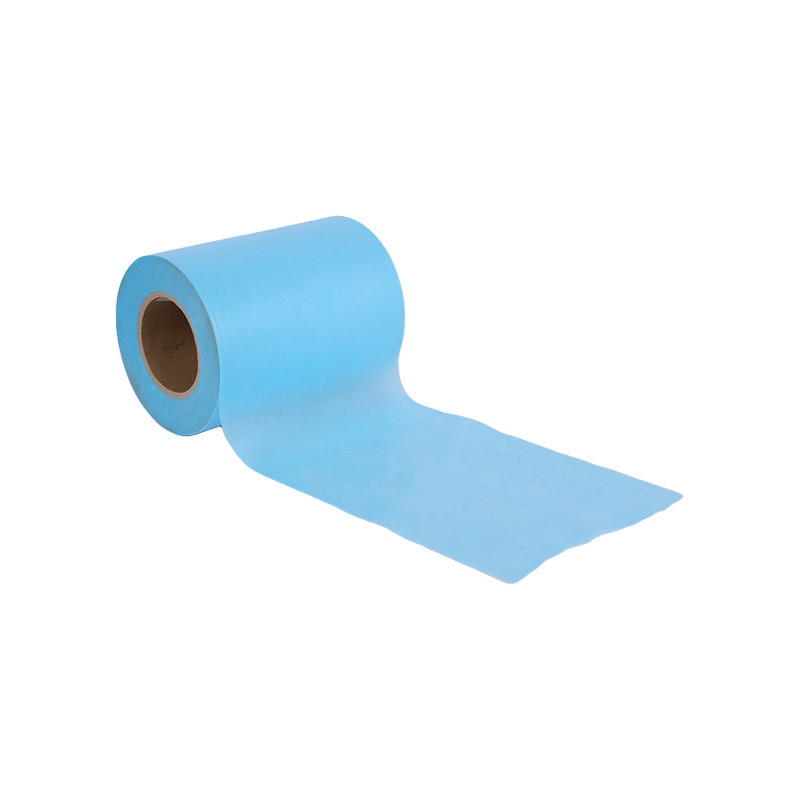Filmed non-woven fabric can exhibit chemical resistance, depending on the choice of materials used in the film layer and the specific manufacturing processes employed. Here are the key characteristics of filmed non-woven fabric with chemical resistance:
Choice of Film Material: The chemical resistance of filmed non-woven fabric primarily depends on the type of film material used. Common film materials that offer chemical resistance include polyethylene (PE), polypropylene (PP), polyvinyl chloride (PVC), and other specialty polymers designed to withstand exposure to various chemicals.
Barrier to Chemicals: The film layer in filmed non-woven fabric acts as a barrier to prevent the penetration of liquids, including chemicals, solvents, and corrosive substances. This barrier property protects the underlying non-woven fabric and any materials or surfaces it comes into contact with.
Protection Against Hazardous Materials: Filmed non-woven fabrics with chemical resistance are often used in applications where there is a risk of exposure to hazardous materials. This includes protective clothing for chemical handling, industrial wipes for cleaning up chemical spills, and containment barriers for chemical storage.
Durability: The film layer enhances the fabric's overall durability and chemical resistance. It can resist the deteriorating effects of many chemicals, preventing degradation, weakening, or disintegration of the fabric when exposed to corrosive substances.
Acid and Alkali Resistance: Depending on the film material, filmed non-woven fabric can exhibit resistance to both acids and alkalis. This property is valuable in industrial and laboratory settings where chemicals with different pH levels are used.
Solvent Resistance: Some filmed non-woven fabrics are engineered to resist common solvents, making them suitable for applications such as solvent wiping, spill cleanup, and protective apparel in chemical laboratories or manufacturing environments.
Customization: Manufacturers can customize the chemical resistance of filmed non-woven fabric by selecting film materials with specific chemical resistance properties. They can also adjust the film thickness to enhance protection against certain chemicals.
Compatibility with Other Materials: Filmed non-woven fabrics can be combined with other materials, such as barrier films, absorbent layers, or reinforcements, to create multi-functional products tailored to specific chemical resistance requirements.
Compliance with Industry Standards: In certain industries, such as chemical manufacturing and healthcare, there may be specific standards and regulations regarding the chemical resistance of protective materials. Filmed non-woven fabrics can be designed to meet these standards.
Safety and Protection: The chemical resistance of filmed non-woven fabric is critical in providing safety and protection to workers and environments where exposure to chemicals is a concern. It helps prevent accidents, injuries, and contamination.
Environmental Considerations: Some film materials used in filmed non-woven fabrics are chosen for their eco-friendliness. Manufacturers may offer biodegradable or recyclable options to reduce environmental impact.
It's important to note that while filmed non-woven fabric can offer chemical resistance, the specific level of resistance can vary depending on the type of chemical, concentration, exposure duration, and temperature. Therefore, it is essential to select the appropriate film-coated non-woven fabric based on the specific chemical hazards and requirements of the application. Testing and validation of chemical resistance may be necessary in some cases to ensure the fabric's performance in real-world scenarios.
 Filmed non-woven fabric
Filmed non-woven fabric
